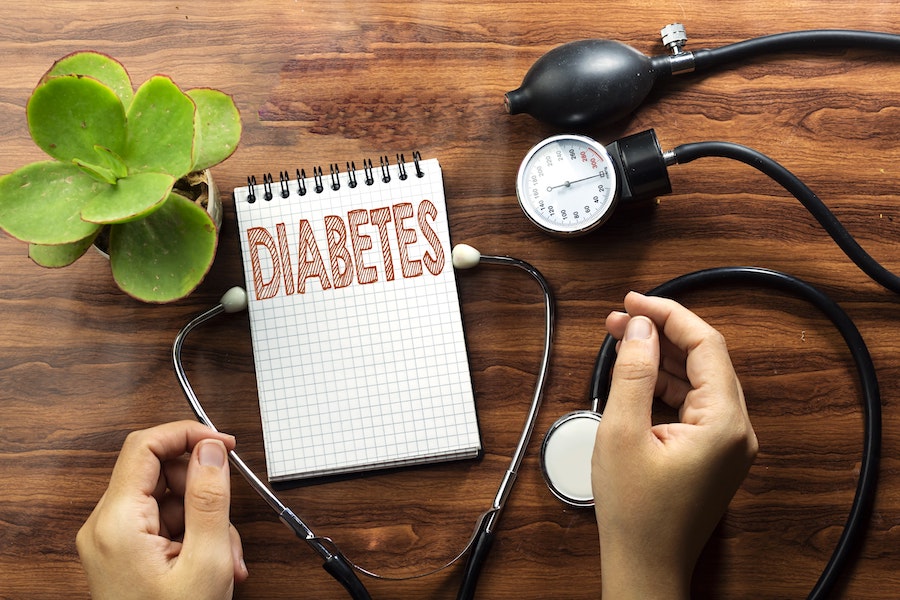Diabetes Week: 7 things everyone should know about the condition
To mark Diabetes Week (June 10–16) we find out what people need to know about this common, but often misunderstood, illness.
There are 4.7 million people in the UK with diabetes, and around 90% of them have Type 2. Yet despite the condition being so common, there’s a huge lack of understanding around exactly what the disease is, and how it’s triggered and treated.
To mark Diabetes Week (June 10–16), Professor Francesco Rubino, a consultant surgeon at the London Bridge Hospital Metabolic and Bariatric Centre (HCA Healthcare UK), outlines seven key facts everyone should know about diabetes…
1. There are two types of diabetes
#DiabetesWeek is less than 2 weeks away! And this year, we’re getting ready to help everyone #SeeDiabetesDifferently. There’s lots of ways you can get involved – and we’ve got loads of resources for you to use on our website to help you get started: https://t.co/a5qpf1UydR pic.twitter.com/90JAmGsBkO
— Diabetes UK (@DiabetesUK) May 29, 2019
“There two main types of diabetes, Type 1 and Type 2. Although both types are characterised by an elevation of glucose (sugar) in the blood, Type 1 and Type 2 diabetes differ in many ways. ,” explains Rubino.
“Type 1 is an autoimmune condition where the pancreas can’t produce insulin, a hormone that controls blood sugar levels. Hence, patients require injections of insulin or special insulin pumps.
“With Type 2, the pancreas can usually produce insulin, but the amount produced isn’t enough, as the body’s cells are resistant to the effects of insulin. In addition to elevating blood sugar, such resistance can cause additional metabolic dysfunction, which explains why Type 2 diabetes is often associated with other conditions such as high blood pressure, increased blood lipid levels, and fat deposition in the liver. Although Type 2 diabetes is initially treated by diet and oral drugs, some patients may eventually require insulin as the ability of the pancreas to make it deteriorates over time due to the hard work required to overcome insulin resistance.”
“Type 1 usually begins in childhood, but can also occur later in life,” Rubino adds. “Although Type 2 is more often diagnosed in adult life, over the last two decades there’s been an increasing prevalence in adolescents.”
2. Many people don’t know they have diabetes
“Up to 549,000 people [are] thought to be living with the condition undiagnosed in the UK alone.”
3. Symptoms aren’t always obvious
Did you know that over half of all cases of #Type2diabetes can be prevented? If you’re worried about your risk, check out our online Know Your Risk tool, or visit your local @Tesco pharmacy for a free risk assessment & advice on how to reduce it: https://t.co/9PwdqJQhwO pic.twitter.com/VJSnKZfX4G
— Diabetes UK (@DiabetesUK) June 5, 2019
“Many people have Type 2 diabetes without realising, because symptoms aren’t always obvious, and don’t necessarily make you feel unwell,” says Rubino.
He notes that symptoms include: “Feeling tired during the day, particularly after meals; increased hunger, particularly after eating; urinating more frequently, particularly during the night; feeling unusually thirsty; blurred vision; itching of the skin; slow healing cuts or wounds; regular yeast infections; sudden weight loss or loss of muscle mass.”
4. There are risk factors for anyone when it comes to Type 2 diabetes
We need vigorous, relentless advocacy to tackle pervasive weight bias and misconceptions that undermine progress and care in obesity, diabetes Thanks to @ObesityAction for supporting @WCITDiabetes @PSchauerMD @ConscienHealth https://t.co/Zv4AkrwFHB
— Francesco Rubino (@FRubinoMD) April 11, 2019
“Anyone can develop Type 2 diabetes, but there are a number of factors which make some people more susceptible to the disease than others,” says Rubino. These include:
Obesity: A high BMI is strongly associated with increased risk of developing Type 2 diabetes. The risk is highest when fatty tissue is mostly located around the abdominal area. For reasons that aren’t entirely understood, this particular type of fat distribution is strongly associated with insulin resistance.
Age: Risk can increase with age, as people over 40 become less active, carry more fat and tend to become less sensitive to the action of insulin
Ethnicity: Type 2 diabetes is more likely to occur in people of South Asian descent and African-Caribbean or Black African descent, for reasons unknown.
Genes: Type 2 diabetes is more likely to occur if there’s a history of disease in a parent, brother or sister.
High blood pressure: A history of high blood pressure has also been known to put people more at risk of developing the disease.
Polycystic ovary syndrome (PCOS): PCOS is associated with insulin resistance, meaning higher levels of insulin circulate in the blood – thus increasing the risk of Type 2 diabetes.
5. Type 2 diabetes can be simple to diagnose
We’re proud to have a number of dietitians working for us, who help to develop dietary info and advice to support people with #diabetes. Find out more on #WhatDietitiansDo here: https://t.co/rUNreTiOCW #DietitiansWeek pic.twitter.com/45M5ZiDr7O
— Diabetes UK (@DiabetesUK) June 5, 2019
Rubino says “Type 2 diabetes can be diagnosed using an blood test, which gives an indication of the average blood sugar level for the past two to three months.”
“A combination of diet, exercise and medication are often prescribed to patients with Type 2 diabetes. and in many cases these can bring blood sugar under control,” he adds.
6. Surgery isn’t necessarily a last resort
Metabolic Surgery: Changing Hearts and Minds – ConscienHealth https://t.co/Zh1TGAHlCB
— Francesco Rubino (@FRubinoMD) April 9, 2019
“Traditionally, bariatric (weight-loss) surgery has been seen as a ‘last resort’ in the management of obesity and diabetes,” notes Rubino, however, “we now know the stomach and small bowel play a crucial role in the regulation of both the production of insulin and the sensitivity of the body to insulin, explaining the dramatic effects of gastrointestinal surgery on diabetes.
“For this reason, traditional weight-loss procedures are being repurposed as a diabetes treatment, known as metabolic surgery.”
“As we change the anatomy of the stomach and/or the intestine, we also change the signals from these organs, which are involved in the control of metabolic functions. In addition to improving blood sugar levels, metabolic surgery can also help the body to better regulate hunger, satiety and content of fat in the liver,” Rubino explains.
“Studies show about half of patients with Type 2 diabetes who have keyhole metabolic surgery can discontinue all glucose-lowering drugs while maintaining normal levels of sugar in their blood for many years, and possibly lifelong.”
7. Untreated diabetes can lead to serious complications
.@JonAshworth is visiting @KingsCollegeNHS Diabetes Foot Clinic to learn more about diabetes and complications. “Complications are preventable with better care” pic.twitter.com/N7fnXOLyEz
— Diabetes UK (@DiabetesUK) June 4, 2019
“Type 2 diabetes is a condition that gradually progresses and worsens over time,” Rubino warns. “If it goes untreated, the high blood sugar can impact various cells and organs in the body, potentially resulting in complications such as kidney damage, dialysis, eye damage, and an increased risk of heart disease and stroke.”
“Untreated diabetes can also affect the feet, triggering diabetic foot disease, which can lead to numbness and even gangrene and amputation,” he adds. “In addition, high levels of sugar in the blood could potentially result in a coma or, in very extreme cases, potential death.
“It’s therefore vital that people are aware of the symptoms, so they can be diagnosed and treated as soon as possible,” stresses Rubino.
The Press Association
Latest posts by The Press Association (see all)
- How to attract more bees to your garden - May 3, 2024
- The costly insurance pitfalls to avoid when kitting out your garden this summer - May 3, 2024
- Gavin And Stacey’s best moments: From Smithy’s Indian takeaway to Pam eating ham - May 3, 2024
- Princess Charlotte ‘s ninth birthday marked by picture release - May 2, 2024
- Strong passwords more important than ever, experts warn - May 2, 2024





















